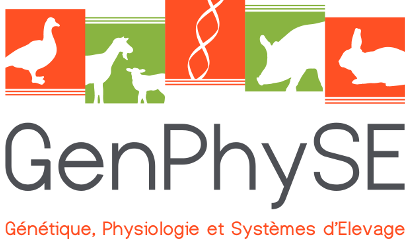December 4/5, 2019
A workshop on Hi-C data will be held at INSA Toulouse, room 109, 1st floor of building 20 on this map, from the 4th (pm) to the 5th (am) December 2019. This workshop aims at bringing together statisticians, bioinformaticians and biologists interested by the topic of chromatine comformation and Hi-C data. The following speakers have already confirmed their participation:
-
Frédéric Bantignies (IGH, Montpellier, France)
-
Nicolas Servant (Institut Curie, Paris, France)
-
Marco Di Stefano (CNAG-CRG, Barcelona, Spain)
Provisional program
December 4
13h30-14h: Welcoming and opening
14h-15h: Nicolas Servant (Institut Curie, Paris, France) Efficient processing of Hi-C data and application to cancer abstract - slides
15h-15h30: Vera Pancaldi (CRCT, Toulouse, France) Chromatin 3D organization principles revealed by network theory: gene-regulation, replication, and beyond abstract - slides
15h30-16h00: Coffee break
16h-17h: Frédéric Bantignies (IGH, Montpellier, France) Super-resolution imaging reveals principles of physical chromatin folding in eukaryotes slides
Abstract
The recent application of the high-throughput Chromosome Conformation Capture (Hi-C) method has revealed that the genome of many species is organized into domains of preferential internal chromatin interactions commonly named «Topologically Associating Domains » (TADs). The presence of these domains emerged as a key feature of higher-order genome organization, and they have been proposed to define regulatory landscapes through the spatial regulation of chromatin contacts between genes and cis-regulatory elements such as enhancers. However, Hi-C data generally represent averaged interaction profiles coming from millions of cells, making difficult the characterization of the physical nature of TADs. Using a combination of DNA Fluorescent in-Situ Hybridization and super-resolution 3D-Structured Illumination Microscopy, we imaged at a sub-diffraction resolution a large number of chromosomal loci in individual cells and uncovered general features of TAD structural properties. In Drosophila, in which TADs correspond to chromatin epigenetic landscapes, we observed that repressed TADs form discrete nanocompartments interspersed by decondensed active chromatin. Single-cell analysis revealed that Drosophila TADs form dynamic yet physically insulated genome units, consistent with a steady segregation of active and repressed chromatin. These results support a physical basis for chromosomal domains in the regulation of DNA-dependent processes. Given the diversity of TAD features across species and during cell differentiation, we are currently investigating the principles underlying TAD physical folding during mouse embryonic stem cell differentiation. This study will shed light into the mechanisms of chromatin folding and provide new insights into the relationship between the structure and the function of TADs.
17h-17h30: Maria Marti-Marimon (CNAG-CRG, Barcelona, Spain) Major reorganization of chromosome conformation during late muscle development abstract - slides
December 5
9h-10h: Marco Di Stefano (CNAG-CRG, Barcelona, Spain) Exploring the dimensions of the genome organization: 1D chromatin tracks and 2D interaction maps for generating 4D models abstract - slides
10h-10h30: Raphaël Mourad (IBCG, Toulouse, France) Studying 3D genome evolution using genomic sequence slides
Abstract
Motivation: The 3D genome is essential to numerous key processes such as the regulation of gene expression and the replication-timing program. In vertebrates, chromatin looping is often mediated by CTCF, and marked by CTCF motif pairs in convergent orientation. Comparative Hi-C recently revealed that chromatin looping evolves across species. However, Hi-C experiments are complex and costly, which currently limits their use for evolutionary studies over a large number of species. Results: Here, we propose a novel approach to study the 3D genome evolution in vertebrates using the genomic sequence only, e.g. without the need for Hi-C data. The approach is simple and relies on comparing the distances between convergent and divergent CTCF motifs by computing a ratio we named the 3D ratio or "3DR". We show that 3DR is a powerful statistic to detect CTCF looping encoded in the human genome sequence, thus reflecting strong evolutionary constraints encoded in DNA and associated with the 3D genome. When comparing vertebrate genomes, our results reveal that 3DR which underlies CTCF looping and TAD organization evolves over time and suggest that ancestral character reconstruction can be used to infer 3DR in ancestral genomes. Availability: The R code is available at https://github.com/morphos30/PhyloCTCFLooping.
10h30-11h00: Coffee break
11h-11h30: Cyril Kurylo (GenPhySE, INRA, Toulouse, France) Detecting and comparing genomic compartments abstract - slides
11h30-12h00: Nathanaël Randriamihamison (MIAT, INRA, Toulouse, France) Hi-C differential analysis: a new method using tree representation based on Contiguity Constrained Hierarchical Agglomerative Clustering slides
Abstract
Hi-C data measures the spatial proximity between pairs of genomic positions and gives insights on the 3D organization of DNA. Hi-C data have already allowed to show/confirm the existence of biologically relevant structures (such as Topologically Associating Domains, A/B compartments, ...) that play an important role in the regulation of gene expression. The aim of Hi-C differential analysis is to find significant differences in 3D structure of the genome between two sets of Hi-C matrices, respectively corresponding to two biological conditions (cell lines, fetal development stages, ...). In this presentation, we will provide a short state of the art of existing methods for Hi-C differential analysis, which usually focus on individual comparisons of the matrix entries. However, these approaches do not account for the hierarchical aspect of the data and might result in difficulties for the interpretation and to understand the structural differences between conditions. We will present the ideas for a new differential analysis method based on Hierarchical Agglomerative Clustering with Contiguity Constraint (CCHAC). CCHAC is performed on individual Hi-C matrices to represent the hierarchical structure on the form of a binary tree, called dendrogram. The problem of Hi-C differential analysis is then translated to a tree comparison problem and handled using tree distances.
Registration
Registration is free but mandatory here. Feel free to contact us if you want more information on the symposium.
This symposium is supported by the CNRS Mission for Interdisciplinarity (project ”SCALES”) and by IMABS.


Organizers: Pierre Neuvial (CNRS, IMT), Sylvain Foissac (INRA, GenPhySE) and Nathalie Vialaneix (INRA, MIAT).







